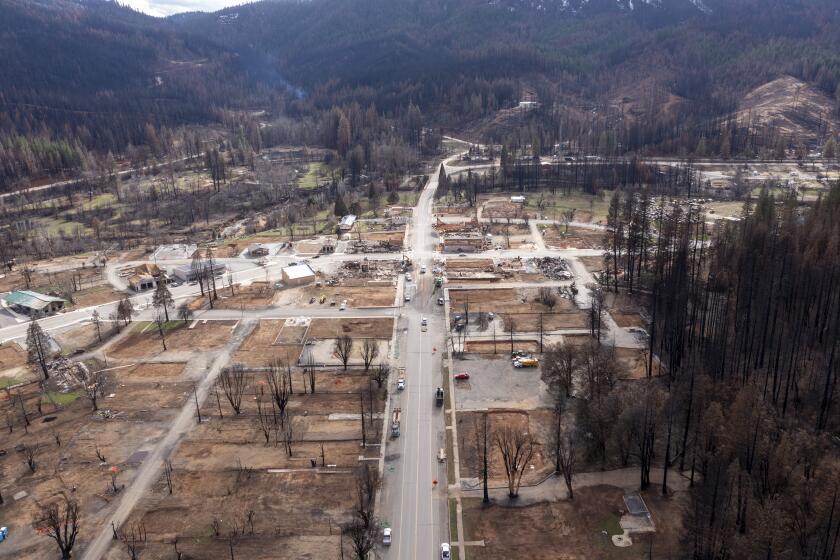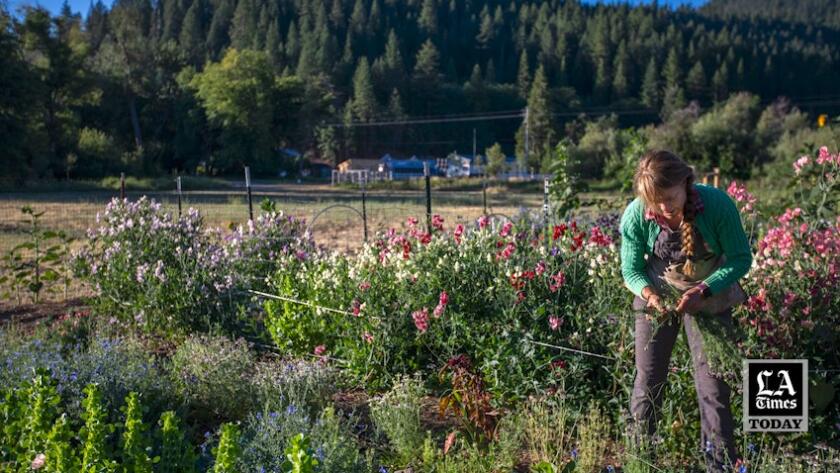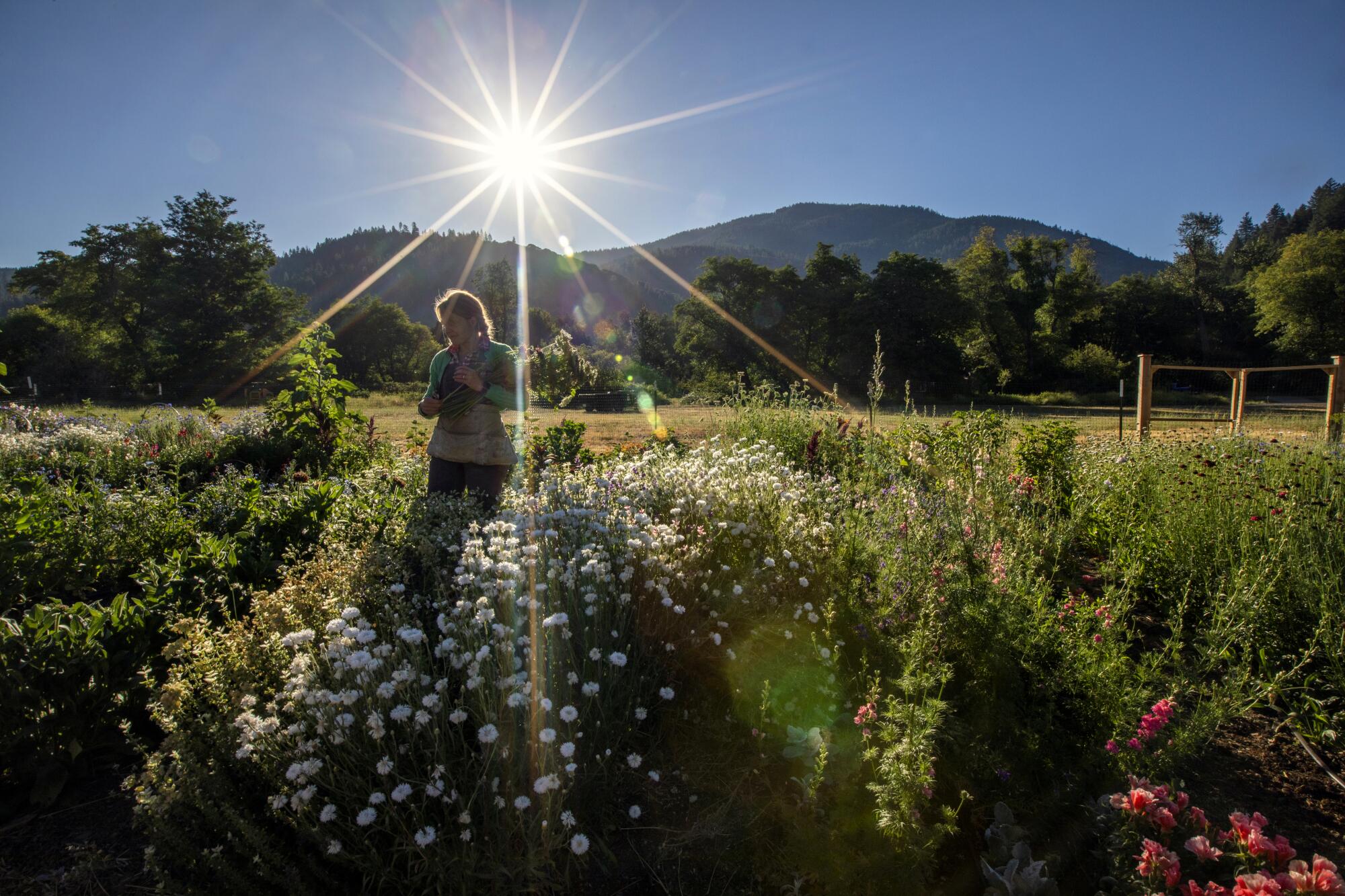
- Share via
TAYLORSVILLE, Calif. — It was between the third and fourth evacuations from the Dixie fire that Kjessie Essue decided to be a farmer-florist.
She was already experimenting with growing flowers in her mountain climate and couldn’t count how many reasons people had given her for why it couldn’t be done: The summers are too short. There’s too many gophers. The deer eat everything. The soil isn’t good. The frost comes too fast.
Then came the fire.
A neighbor, a cattle rancher, stayed behind during the fire to care for the herd. The rancher said she wouldn’t let Essue’s flowers die — and she didn’t.
By the time Essue and her young family returned, Greenville — the town just across the valley, where she grew up and her parents still lived — was gone, the entire downtown smoldering, including her children’s school and the school where her husband, Andre Essue, worked as an administrator and teacher.
She looked at her garden, watered by a neighbor even as fire threatened. The cosmos were almost chest-high, their foliage bright green against the smoke. The zinnias were pops of yellow, orange and cherry-red. She decided the flowers were a sign. A way forward for her family and perhaps to help rebuild the community’s economy.
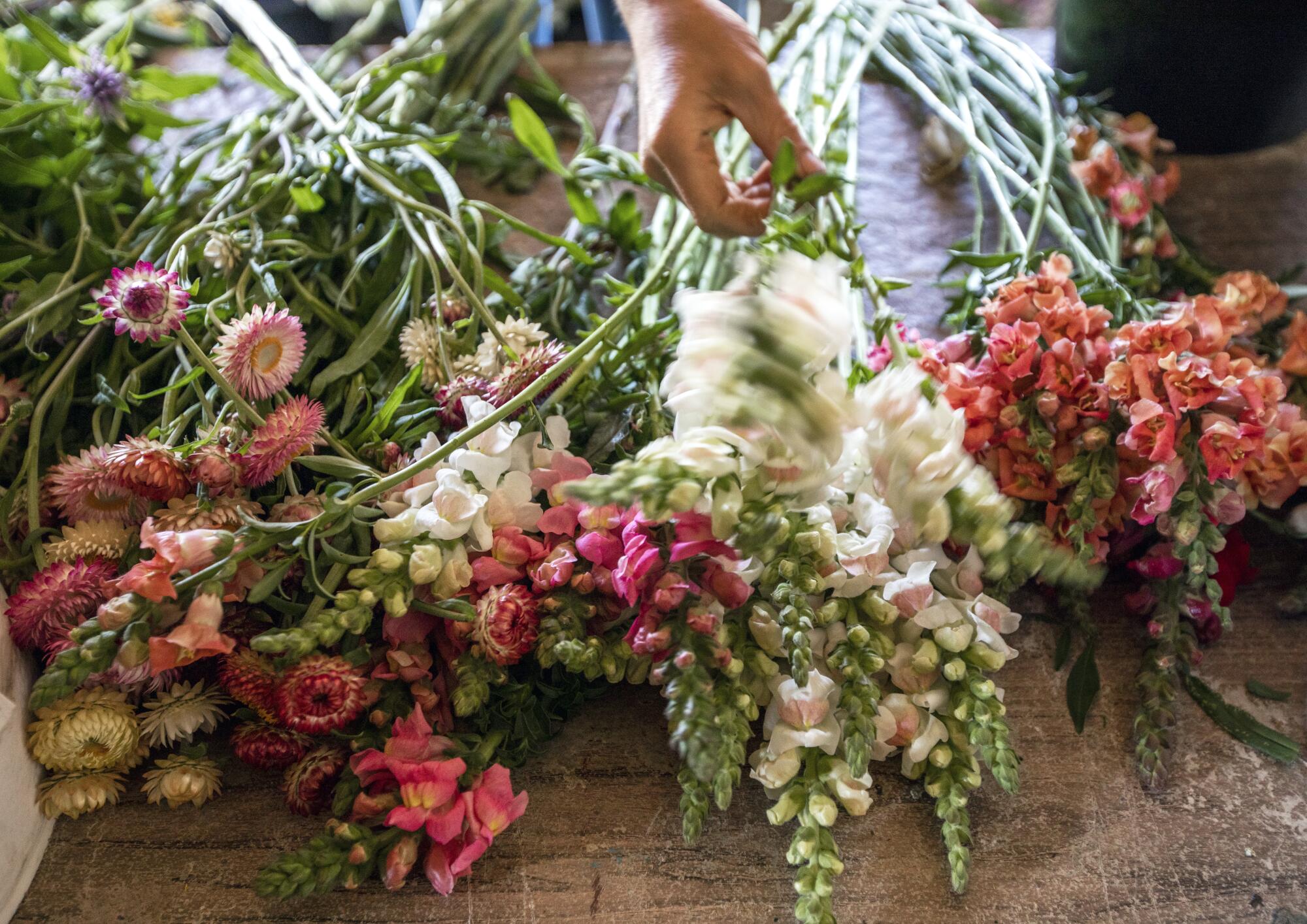
Essue knew about growing things. She’d harvested wheat in Montana, watching the entire sky flash with sheet lightning. On a college study program in New Zealand, she took a theology class that held that taking care of the Earth is foundational to being a Christian; it included studying sustainable agriculture.
She worked on a permaculture farm growing bananas. She had a degree in soil science. While in the Peace Corps, she ran trials on growing teff — a high-protein grain — in Lesotho, a country in Africa where many suffered malnutrition. She and Andre farmed their own vegetables.
But she grew up in a family where failure wasn’t an option. She’d followed the rules: straight-A student, class valedictorian. She was meant to return to this valley and have a stable job in education, like her grandparents and her parents, who had met in kindergarten. She was meant to raise her children — 6-year-old Hugo and 4-year-old twins Ruby and Leo — here in a cheery farmhouse with extended family nearby.
Entrepreneur was something different. Risky. She might fail.
One night, after the kids were asleep, she applied for a scholarship at Floret, a leader in the local flower movement that offers online courses.
“Half the population of our valley lost their homes and a town was wiped off the map,” she wrote in an essay required for the scholarship. “We are all reeling, grieving, and after being home just a week from a seemingly endless evacuation, finding our footing.
“We need beauty like never before, and I have deep clarity that flowers is the direction I need to take our small farm. Creating beauty is an act of love.”
“We need beauty like never before, and I have deep clarity that flowers is the direction I need to take our small farm. Creating beauty is an act of love. “
— Kjessie Essue

She was one of 30 selected from 30,000 for a six-week intensive course in business and marketing. Their nearest neighbors said they could use some of their land for flower farming. In April, nine months after the fire, Barn Swallow Gardens — named for the birds that return each spring after long migrations — began delivering flowers through a subscription service.
Essue fielded self-doubts. Was it frivolous? Would people living in the middle of utter devastation care about a bouquet?
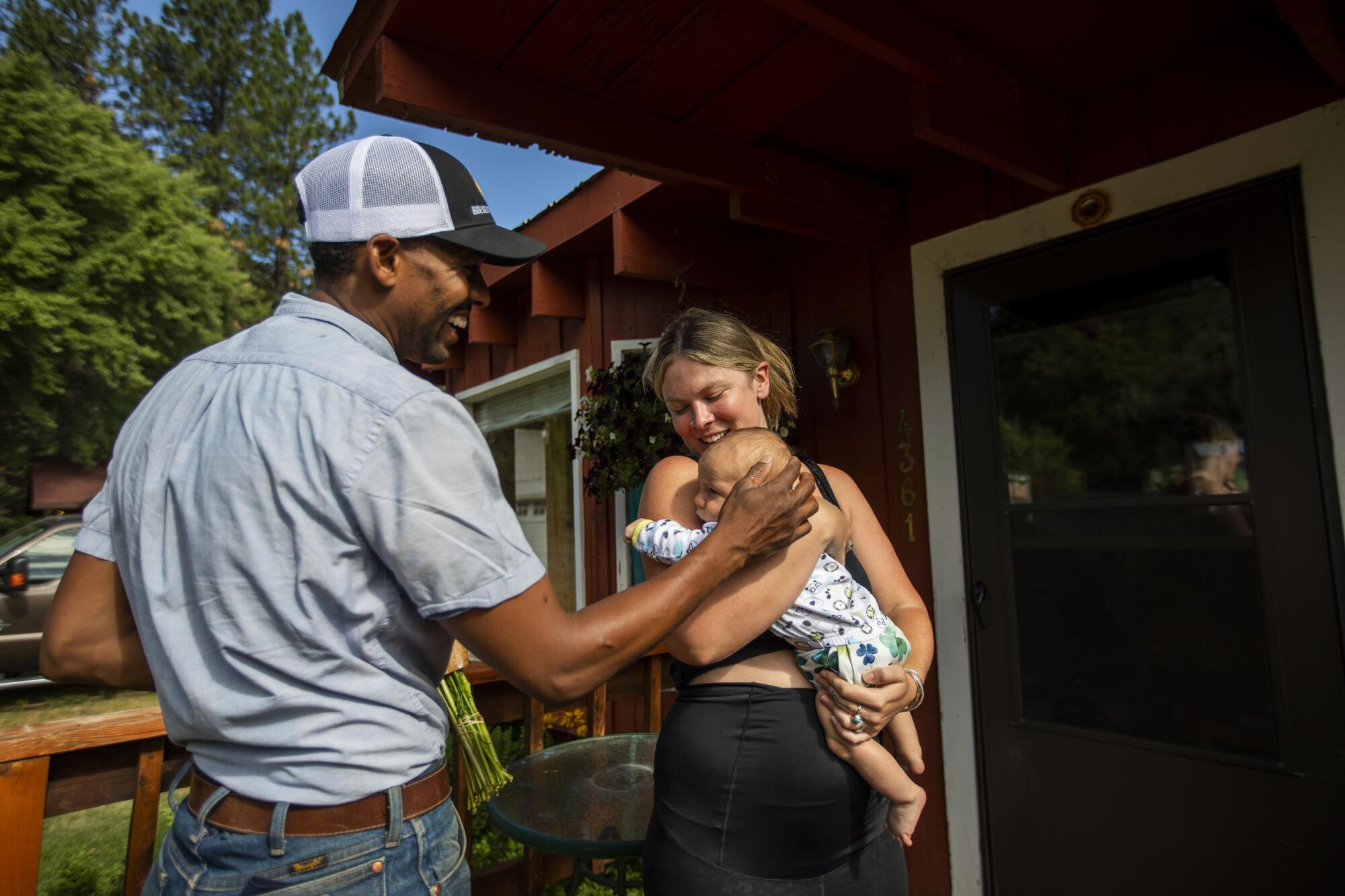
Tuesdays are delivery day. On this Tuesday, Kjessie — pronounced “Chessie” — was taking Hugo to his piano lesson and delivering flowers in Quincy, the county seat of Plumas County and one of its largest towns, with a population of 1,700.
Andre and the twins were taking the route around the valley, including Greenville.
Ruby had dressed herself in a long, sparkly princess dress and high-top sneakers. She was in her car seat, next to Leo, practicing saying the names of flowers: “scabiosa.”
Kjessie knocked on the window.
“OK, team! Let’s move. Have fun.”
Andre drove past the historic brick general store where old-timers Carl and Whitey used to sit outside each morning. Carl died last year, but Whitey, a former trapper, was still there, alone.
Just past the half-a-block downtown, hundreds of geese rose in a cloud from a grass pasture.
“People get an idea when they hear ‘rancher,’ but there are no feedlots here, this is grass farming. Look at the wildlife,” Andre said.
He grew up in Atlanta. His mother emigrated from Jamaica. He is now a Black man living in a rural, mostly white area.

“There are bigots to be sure,” Andre said, but he rejects the idea that this is a more racist part of California. “If we have X amount of people who are hateful or ignorant, how many of those same people live in L.A., maybe upstairs and their neighbors just don’t know?
“Here, I literally know them. In a rural space, you’re codependent. Your neighbor is your kids’ teacher. Or the person who is going to pull your car out of the snow. You can’t hide who you are.”
He thinks rural stereotypes are a purposeful erasure.
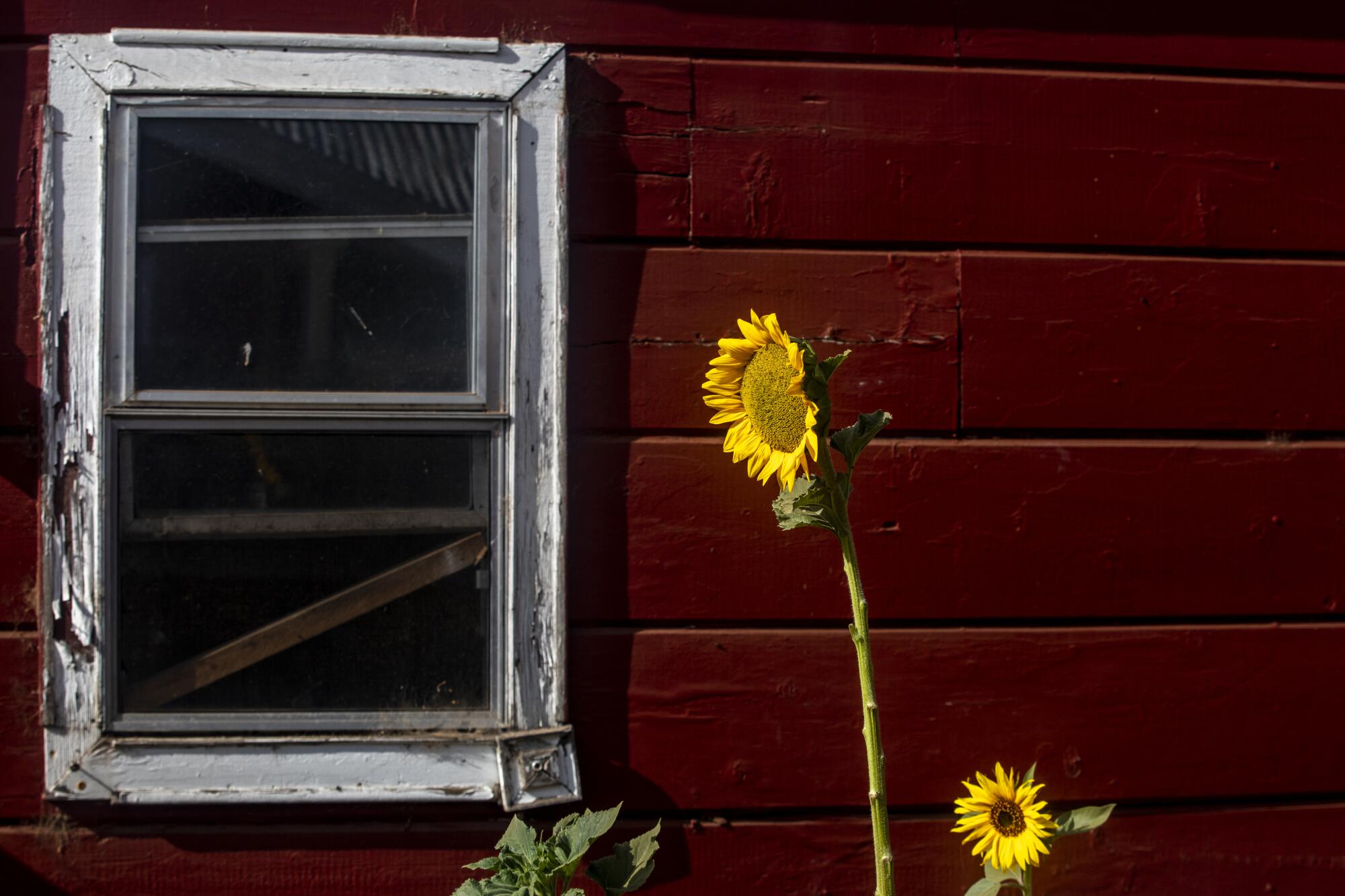
“If you can discredit a whole swath of people, you can control the narrative of what rural is. You can discount the rural perspective,” he said.
“It’s so wrong. You play that game of division long enough, you’re going to convince people to hate each other.”
At the next house, the owner, a Marine, has planted a field of lavender that glows fluorescent in the morning light.
“It’s art,” Andre said. “That field was nothing but brown leaves.”
Highway 89 climbs up before dropping into Greenville, a stretch called the Grade. The once heavily forested hillsides are charred black. The pine-scented air is gone. The pine, cedar, fir and oak trees are piles of pickup sticks. The twins grew silent.
“Do you want to go to the Daily Grind?” their father asked.

“Yes! Hot chocolate!” shouted Leo, who had been successfully distracted.
The Daily Grind, a bright yellow food truck, sits in the middle of emptiness in what was once a town. The truck replaced a downtown cafe awaiting its grand opening when the fire wiped it out.
“Hey, Grace, when’s your parents’ end of summer party?” a man asked the young woman dishing out açaí bowls to a crowd who all knew one another’s first name.
Without landmarks, the geography was disorienting. Was that intersection over there really the site of a restaurant on the corner and a big hotel across the street? Yes.

The Dixie fire remains the second largest in California history, and it took less than a half-hour to flatten Greenville beyond recognition. Somehow, no one died.
Pacific Gas & Electric was faulted, both for the spark and the delayed response. A hand-drawn sign hanging on a picnic table touts the idea of rebuilding a solar town, a lipstick print suggesting kissing the electric company goodbye.
Efforts are underway to rebuild Greenville, Calif., from the ashes of the Dixie fire. Can it be made to survive the next wildfire?
It was an unusually warm day for the mountains and the flowers couldn’t be kept waiting. Leo and Ruby took their yogurt-fruit bowls to go.
Jane Braxton Little and her husband, Jon, arrived home just in time to get their flower delivery in person. They live in a spared area of Greenville where some trees still cast lacy shadows.
For the record:
9:02 a.m. Aug. 15, 2022An earlier version of this article misidentified Jane Braxton Little’s husband. Also, the article reported that Kjessie Essue was among 30 people selected from 30,000 for a program run by Floret. Essue was one of 17 people, selected from about 6,500, who received full scholarships for the course in business, marketing and the fundamentals of flower growing.
“Did you know Sir Isaac Newton stuck a pen in his eyeball?” Leo, who had watched a history show, asked Braxton Little.
She gave him an appraising look.
“Well, Van Gogh cut off his ear,” she said.
Braxton Little is a science journalist whose work, often on climate change, appears in national magazines. She has a degree in Japanese art from Harvard. She came to Plumas County for a summer in 1969 and never left. She remembers when Kjessie lived down the street and often walked by leading her 4-H pig.
On one of the most important deliveries of the day, Andre pulled into a partly burned summer camp.
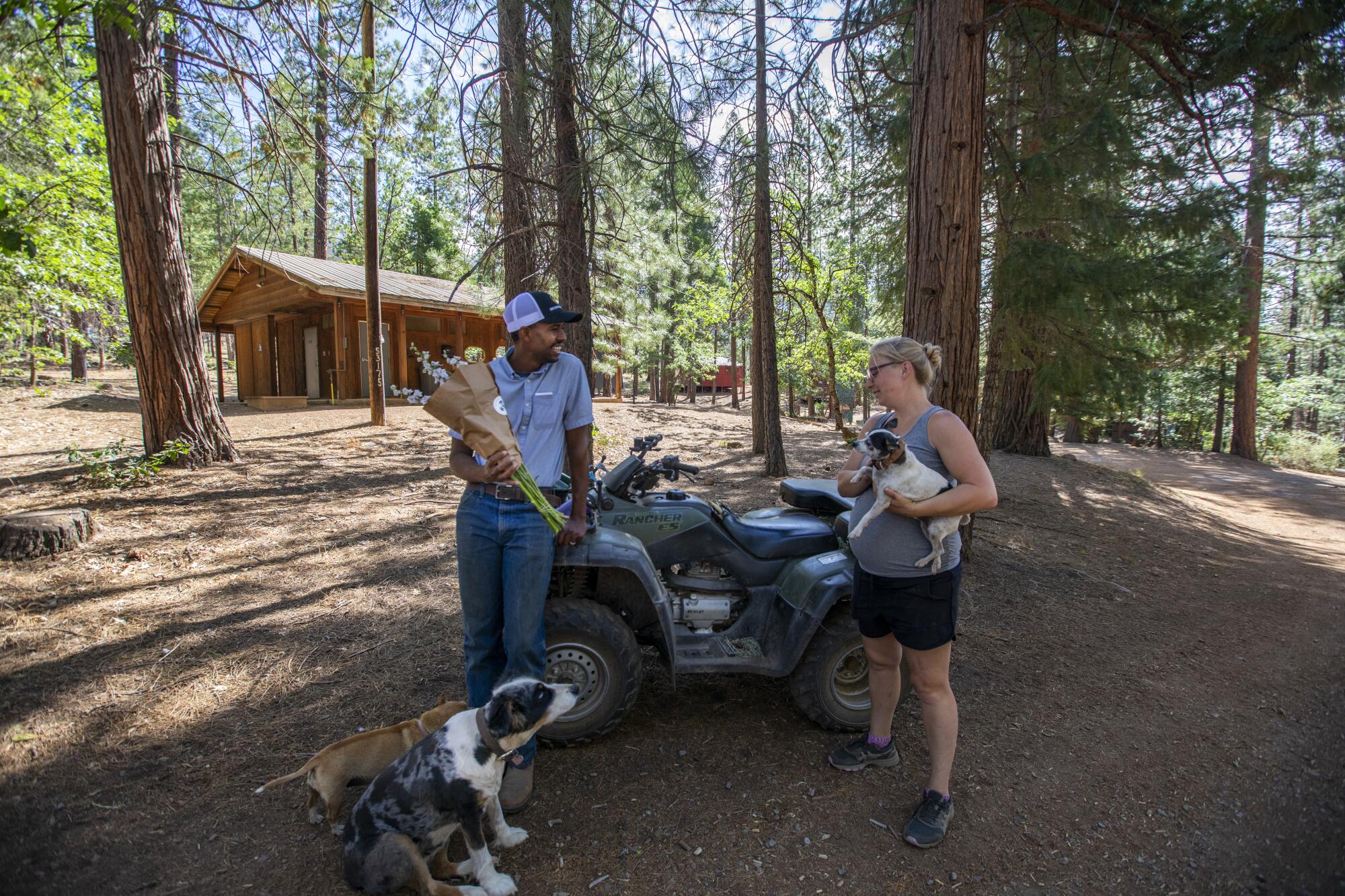
A woman raced up on a quad bike, trailed by several small and/or ancient dogs.
Sutter Rogers, pregnant, buried her face in the fresh flowers as soon as they were in her hands.
“This is my favorite day of the week,” she said. “There’s just something about flowers.”
For decades her family’s camp drew an international clientele seeking the classic Sierra summer experience.
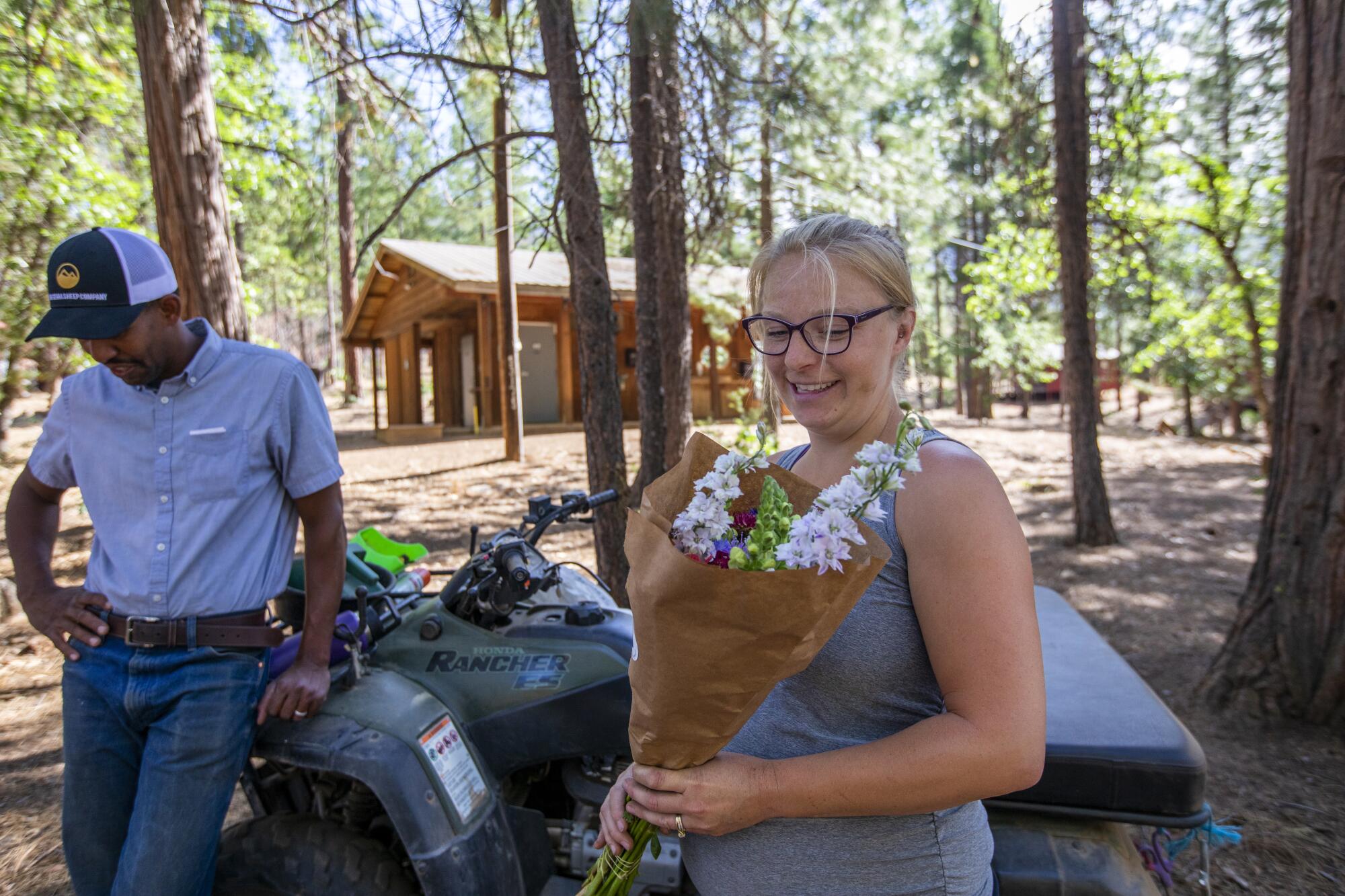
In 2014, Rogers’ mother, the camp director, was murdered by a part-time employee. Greenville had previously struggled with crimes tied to meth addiction. But nothing like this violence.
The family was determined to keep the camp going. Then the COVID-19 pandemic meant two years with no income. They had to sell. Rogers was heartbroken.
The property was in escrow when the fire came, and the sale fell though.
Now she and her husband and young son are living at the camp. They are redesigning the cabins to rent to the construction crews flooding the area.
As Andre drove back to Taylorsville, the landscape shifted from burn scar to color.
Andre once saw Taylorsville from his window on a flight to Sacramento. The community of fewer than 200 appeared to be on the tiptop of a mountain where the land opened flat and streams crisscrossed.
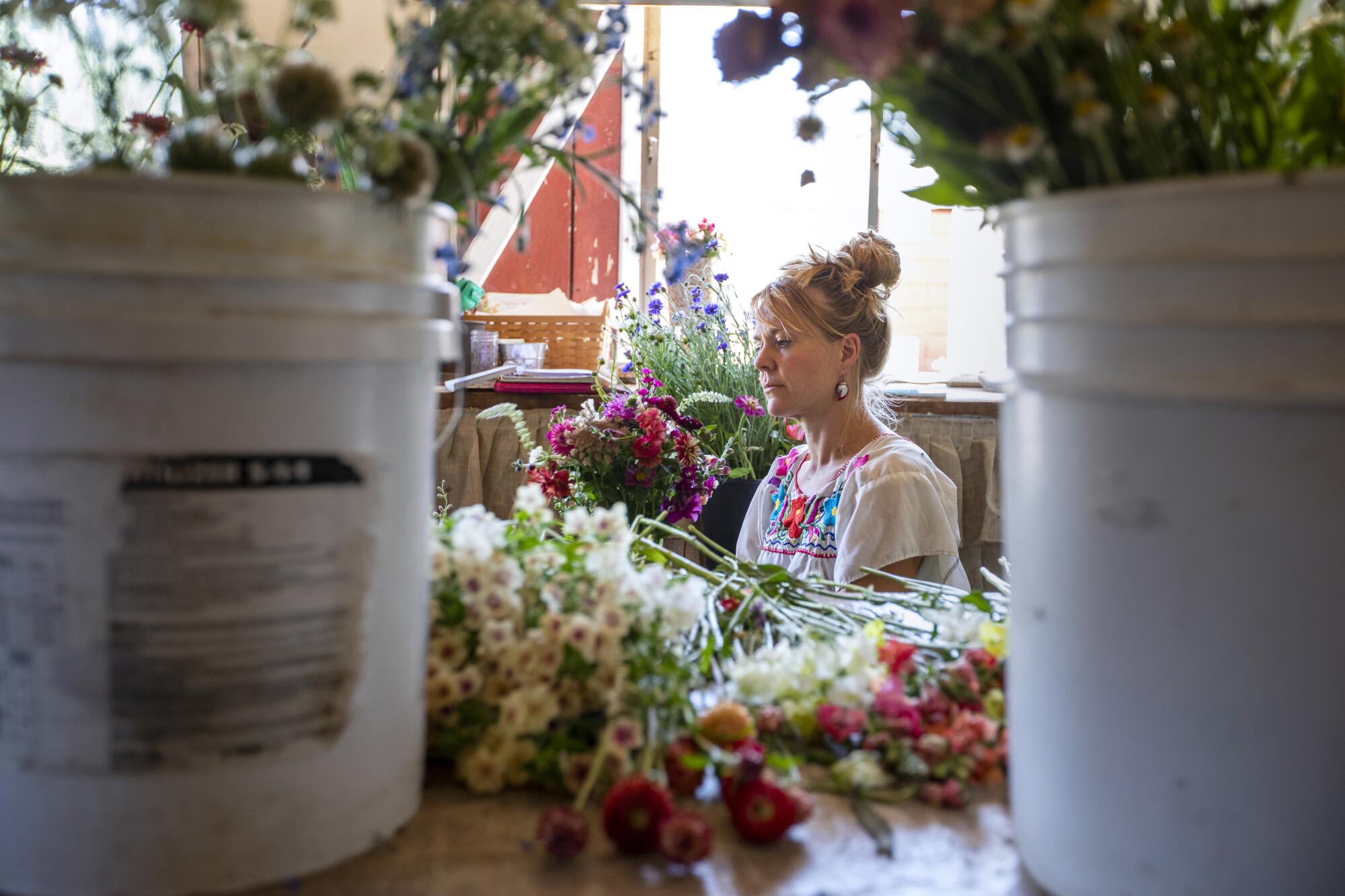
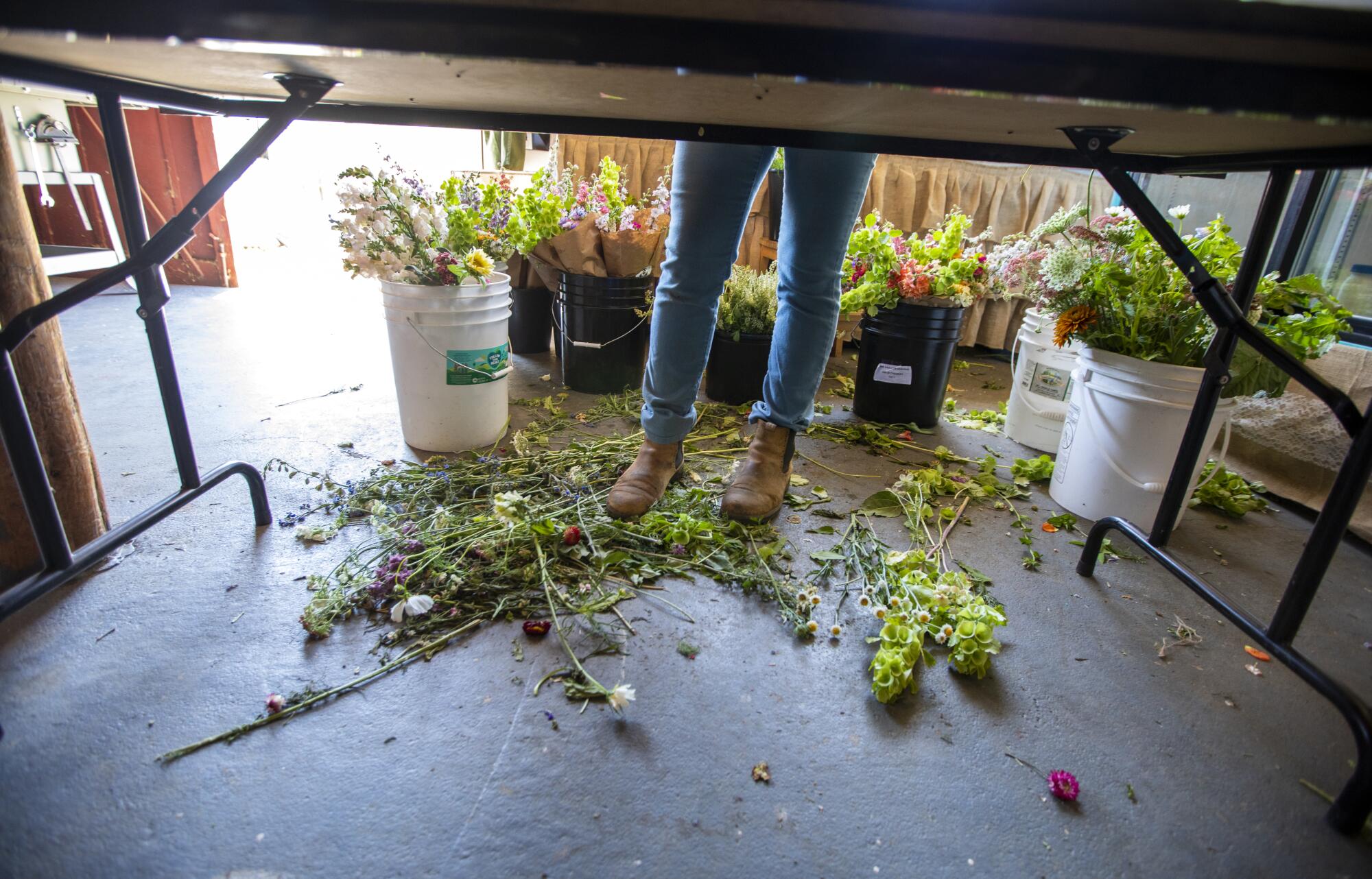
He thinks it’s fitting because Lesotho, where he and Kjessie met when they were Peace Corps members, is a mountaintop kingdom. She was wearing a bright red jumpsuit. He knew from the beginning that she was drawn to colorful things such as flowers.
Unlike his wife, he wasn’t raised around people who were deeply rooted.
In Andre’s neighborhood, most were first-generation immigrants who had seen their worlds upended. His mother’s friends had law degrees from the Caribbean but were running bakeries or were molecular engineers looking for any kind of job. The ethos was to work hard, hustle and make it up as you went.
He knows that the business they’re building — in a place they love — could go up in flames.
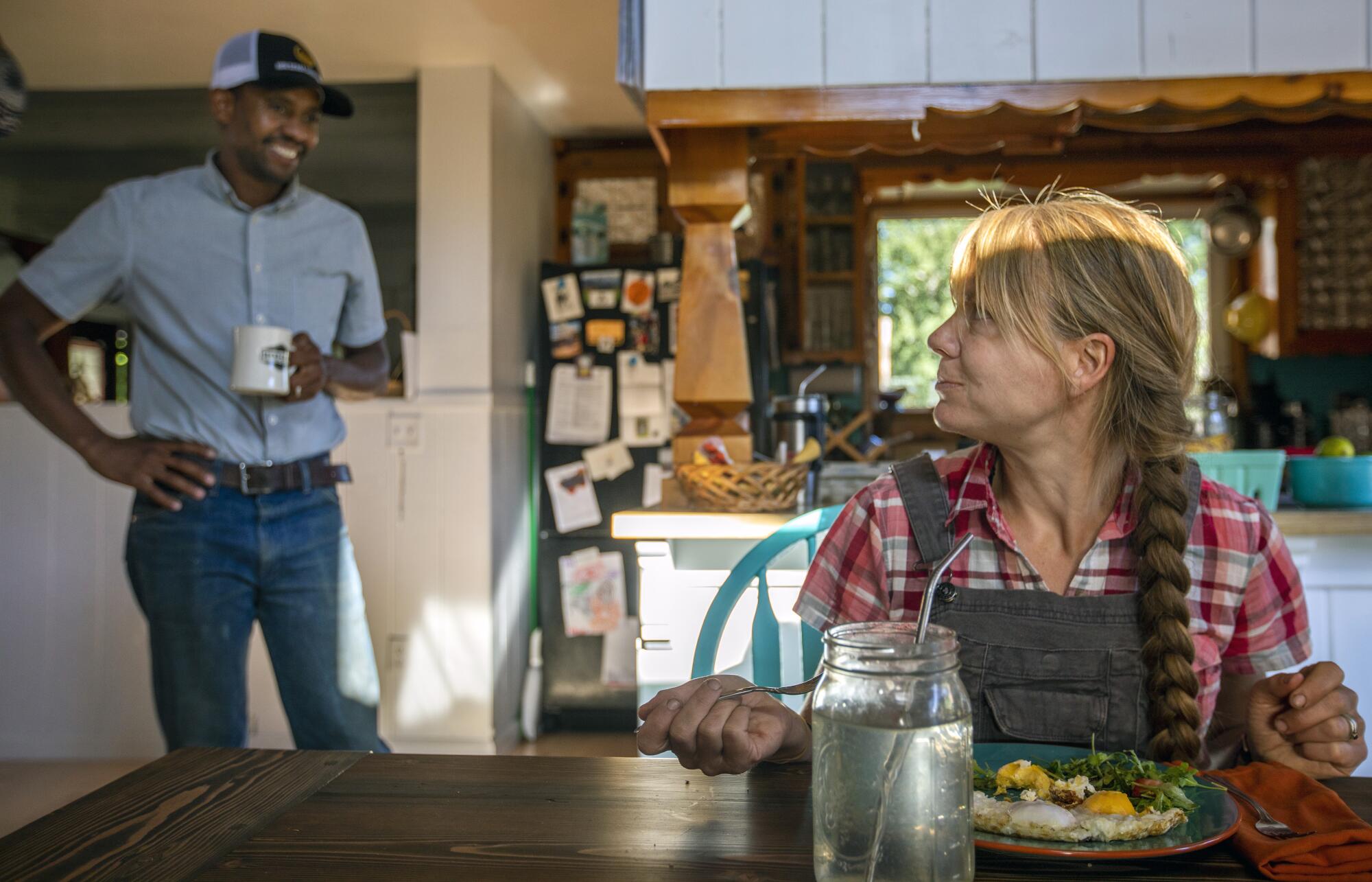
“The plan is to give 110% and create the most beautiful thing we can and if it burns, we’ll go from there,” he said.
“It’s like climate change. They’re even giving end dates for the world. Do you just say, ‘Oh, well, it’s over’? Or do you live as fully as you can?”
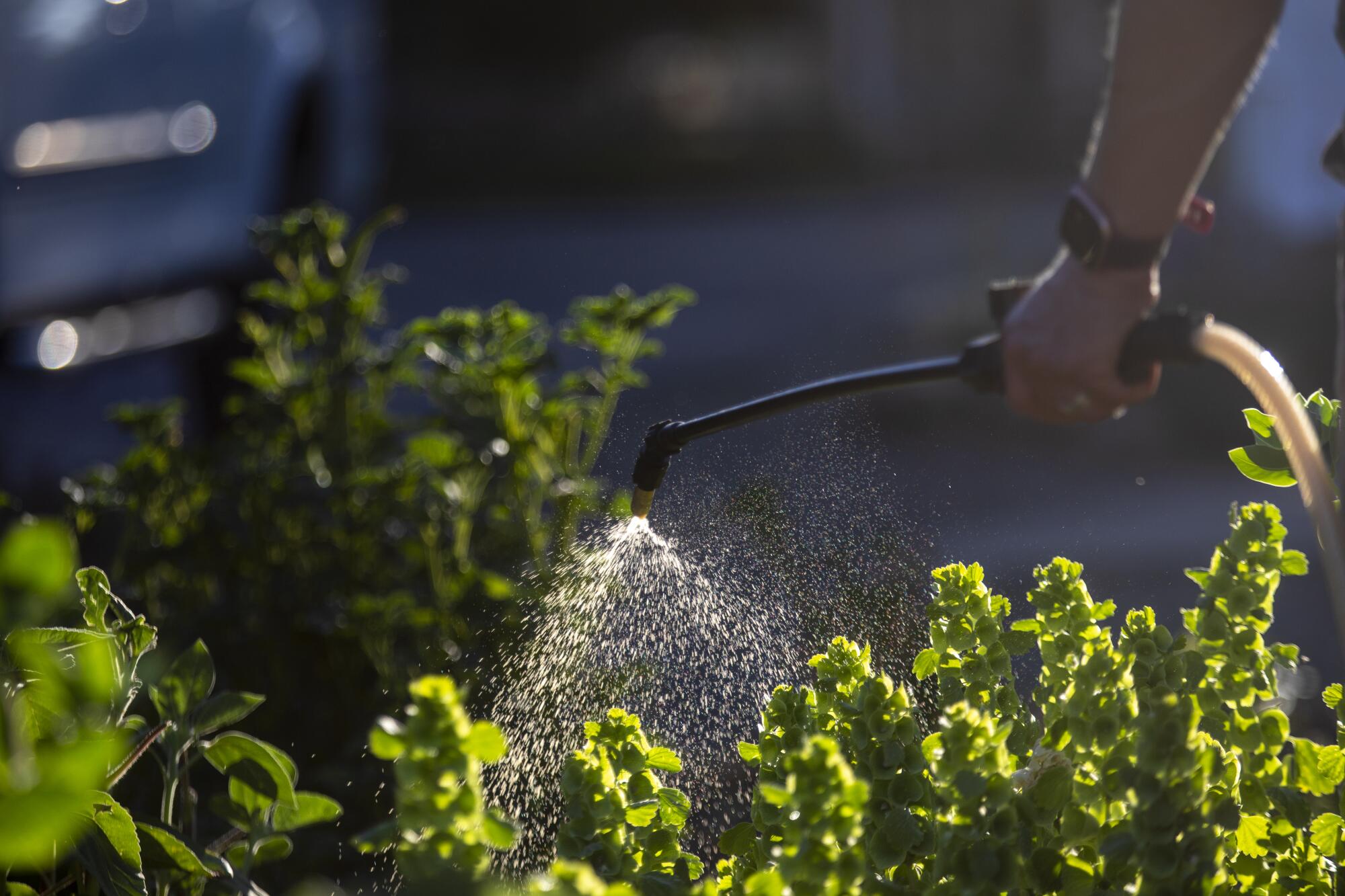
That evening, while the flower delivery crew was busy with baths and bedtime, Kjessie went back to the garden to work.
She strapped on a heavy rig that people often wear while spraying pesticides. She was applying her own “flower tea” — a mix of raw milk from their Nigerian dwarf goats, molasses, fermented plant juice, eggshell extract and comfrey — to give the plants a nutritional boost.
The late-summer flowers were the colors of a sunset: pale golds, blushy oranges and rose pinks.
“I’m loving the rudbeckia this time of year,” she said. “They’re peaceful.”
In the spring, Kjessie had loved the ranunculus because they were “marshmallowy and pillowy and really romantic.”
When she doesn’t have enough flowers, she forages for manzanita or adds branches.
She sold out her subscriptions the first week, many to people outside the area who bought them for friends living surrounded by destruction. Her goal for the first year was $20,000 in sales to break even on building infrastructure. She’s on track to meet that. The five-year goal is $80,000 and beyond that more ideas: maybe seeds, classes, a garden that tourists can visit.
She and Andre talk to the children about generational wealth and building something to create opportunity in their remote town. It’s a dream that begins with growing local flowers in the Sierra to deliver to a burn area with almost no economic engine.
“It’s ludicrous,” Kjessie said with a delighted laugh.
But the timing is right.
“The fire was a galvanizing force to do it now,” she said. “Beauty has never been more needed.”
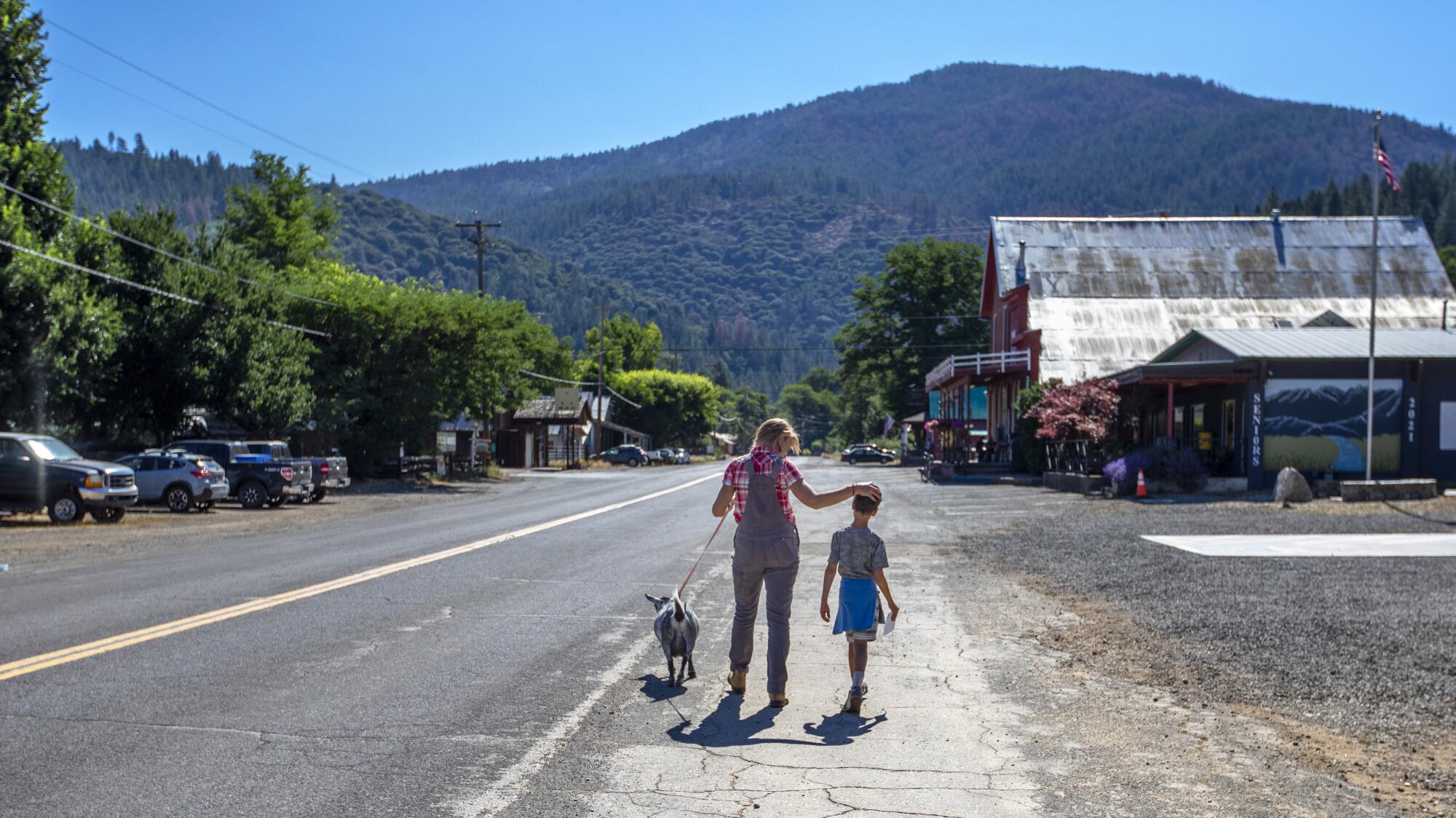
- Share via
Watch L.A. Times Today at 7 p.m. on Spectrum News 1 on Channel 1 or live stream on the Spectrum News App. Palos Verdes Peninsula and Orange County viewers can watch on Cox Systems on channel 99.
More to Read
Sign up for Essential California
The most important California stories and recommendations in your inbox every morning.
You may occasionally receive promotional content from the Los Angeles Times.
